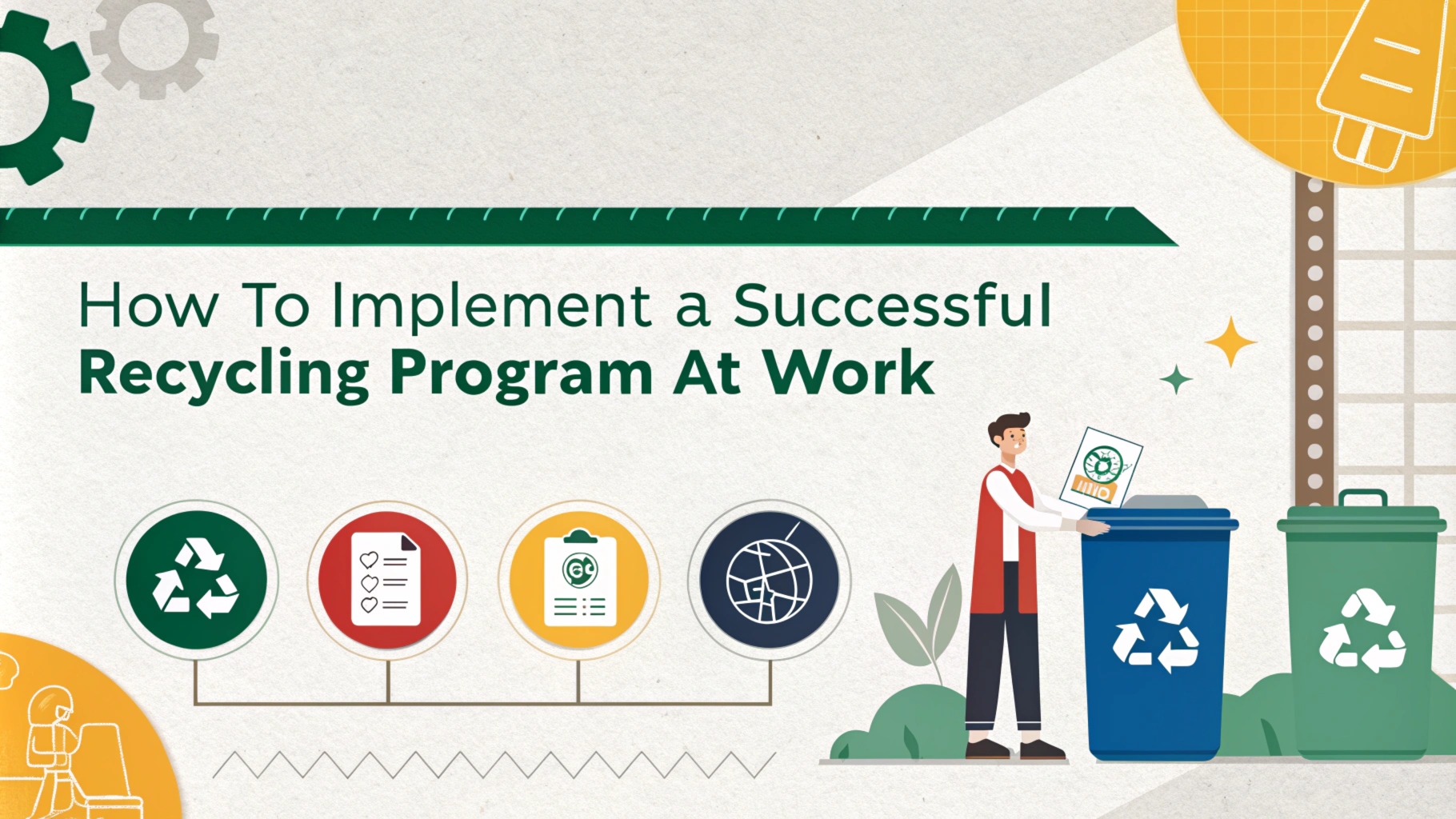In today’s environmentally conscious world, implementing a successful recycling program at work is more important than ever. Not only does it contribute to sustainability efforts, but it also enhances your company’s reputation, reduces waste, and can even save costs. However, starting a recycling program can be challenging without a clear strategy. This guide will walk you through the steps to create an effective recycling program in your workplace.
Why a Recycling Program Matters
Before diving into the implementation process, it’s essential to understand why a recycling program is beneficial for your organization.
Environmental Impact
Recycling reduces the amount of waste sent to landfills and conserves natural resources. It helps lower greenhouse gas emissions and minimizes pollution, contributing to a healthier planet.
Cost Savings
Recycling can lead to significant cost savings by reducing waste disposal fees. Many businesses find that recycling programs also lower their overall waste management costs.
Employee Engagement
A well-implemented recycling program fosters a sense of community and responsibility among employees. It encourages them to think about their environmental impact and engage in sustainable practices.
Step-by-Step Guide to Implementing a Recycling Program
Step 1: Assess Current Waste Management Practices
Before launching a recycling program, evaluate your current waste management practices. This assessment will help you identify areas for improvement and determine what materials can be recycled.
Action Steps:
- Conduct a waste audit to analyze the types and volumes of waste generated.
- Identify recyclable materials such as paper, plastics, metals, and electronics.
- Assess current disposal methods and costs associated with waste management.
Step 2: Set Clear Goals and Objectives
Establishing clear goals and objectives is crucial for the success of your recycling program. Determine what you want to achieve and how you will measure success.
Action Steps:
- Set specific targets (e.g., increase recycling rates by 30% within one year).
- Define metrics to evaluate progress, such as the volume of recycled materials or waste diverted from landfills.
- Communicate these goals to all employees to foster a sense of shared responsibility.
Step 3: Educate Employees
Employee education is vital for the success of any recycling program. Providing information about the importance of recycling and how to participate will encourage engagement.
Action Steps:
- Organize training sessions to explain the recycling program and its benefits.
- Create informative materials, such as posters and brochures, that outline what can and cannot be recycled.
- Host workshops or events to promote recycling and sustainability initiatives within the workplace.
Step 4: Designate Recycling Stations
Setting up clearly labeled recycling stations throughout the workplace makes it easy for employees to participate in the recycling program. Ensure that these stations are conveniently located near waste disposal areas.
Action Steps:
- Provide separate bins for different materials (e.g., paper, plastics, metals, and compost).
- Use clear signage to guide employees on how to sort their waste correctly.
- Ensure that recycling bins are easily distinguishable from regular trash bins.
Step 5: Partner with Recycling Providers
Collaborating with local recycling providers can streamline the recycling process and ensure that materials are handled correctly. Research local services that specialize in recycling and waste management.
Action Steps:
- Evaluate potential recycling partners based on their services, reputation, and pricing.
- Establish a contract that outlines the terms of service, including collection schedules and materials accepted.
- Communicate with the recycling provider to stay updated on any changes in recycling regulations or materials accepted.
Step 6: Monitor and Evaluate the Program
Regular monitoring and evaluation of your recycling program are essential to its long-term success. This will help you identify areas for improvement and celebrate achievements.
Action Steps:
- Track key performance metrics, such as the volume of materials recycled and participation rates.
- Conduct periodic assessments to identify challenges and areas for improvement.
- Share progress with employees to keep them motivated and engaged.
Step 7: Celebrate Success and Encourage Continuous Improvement
Recognizing achievements and encouraging continuous improvement will help maintain momentum for your recycling program. Celebrate milestones and encourage employees to contribute ideas for enhancing the program.
Action Steps:
- Host events or recognition programs to celebrate recycling achievements.
- Solicit feedback from employees on the recycling program and any challenges they face.
- Continuously seek opportunities to expand the program, such as introducing composting or e-waste recycling.
Implementing a successful recycling program at work is a powerful way to contribute to sustainability, reduce costs, and engage employees. By following these steps—assessing current practices, setting clear goals, educating employees, designating recycling stations, partnering with providers, monitoring progress, and celebrating success—you can create a thriving recycling culture within your organization.
At GreenFuture.sbs, we are committed to helping businesses implement effective sustainability practices, including recycling programs. For more tips, resources, and expert guidance on creating a greener workplace, visit GreenFuture.sbs.
